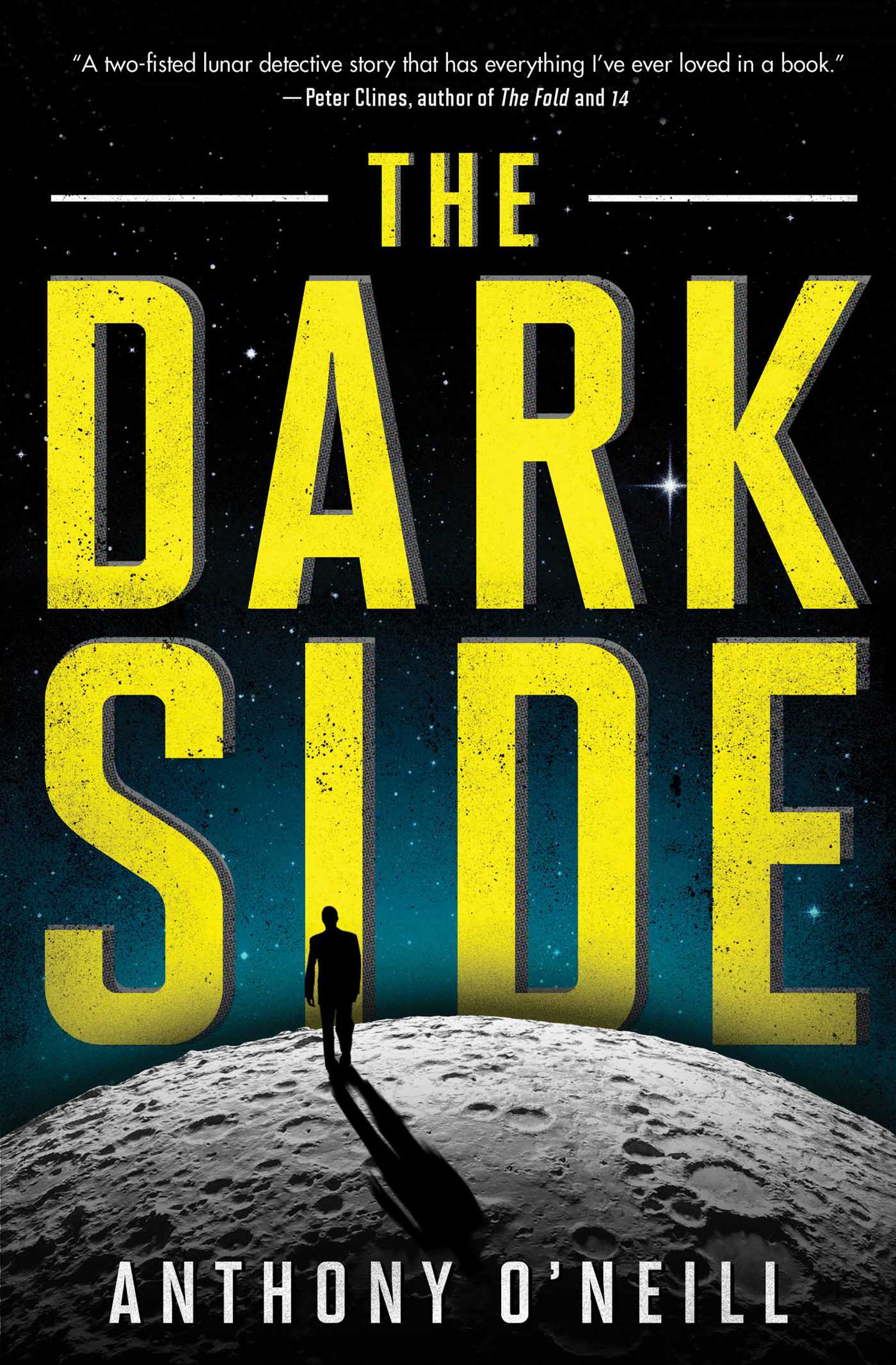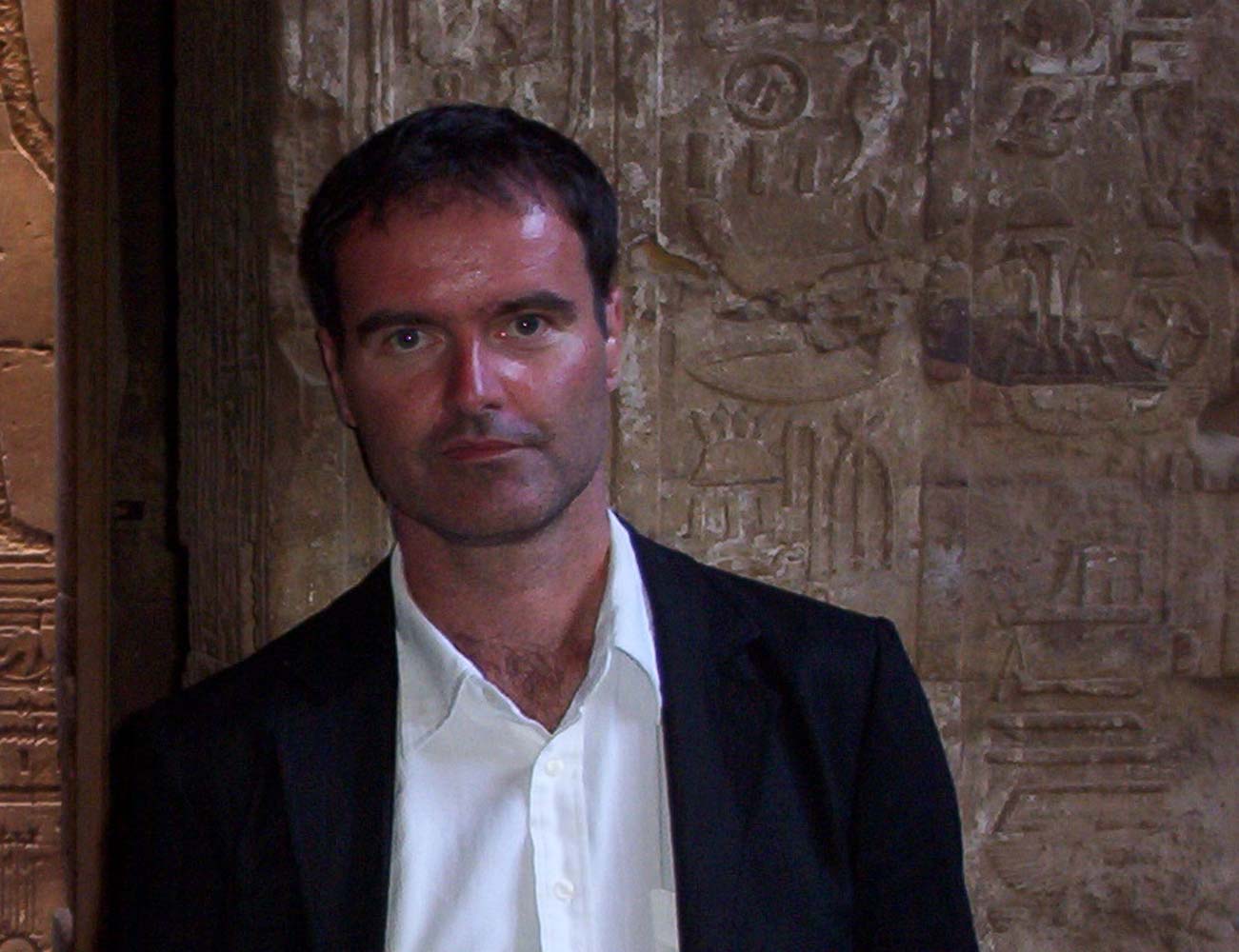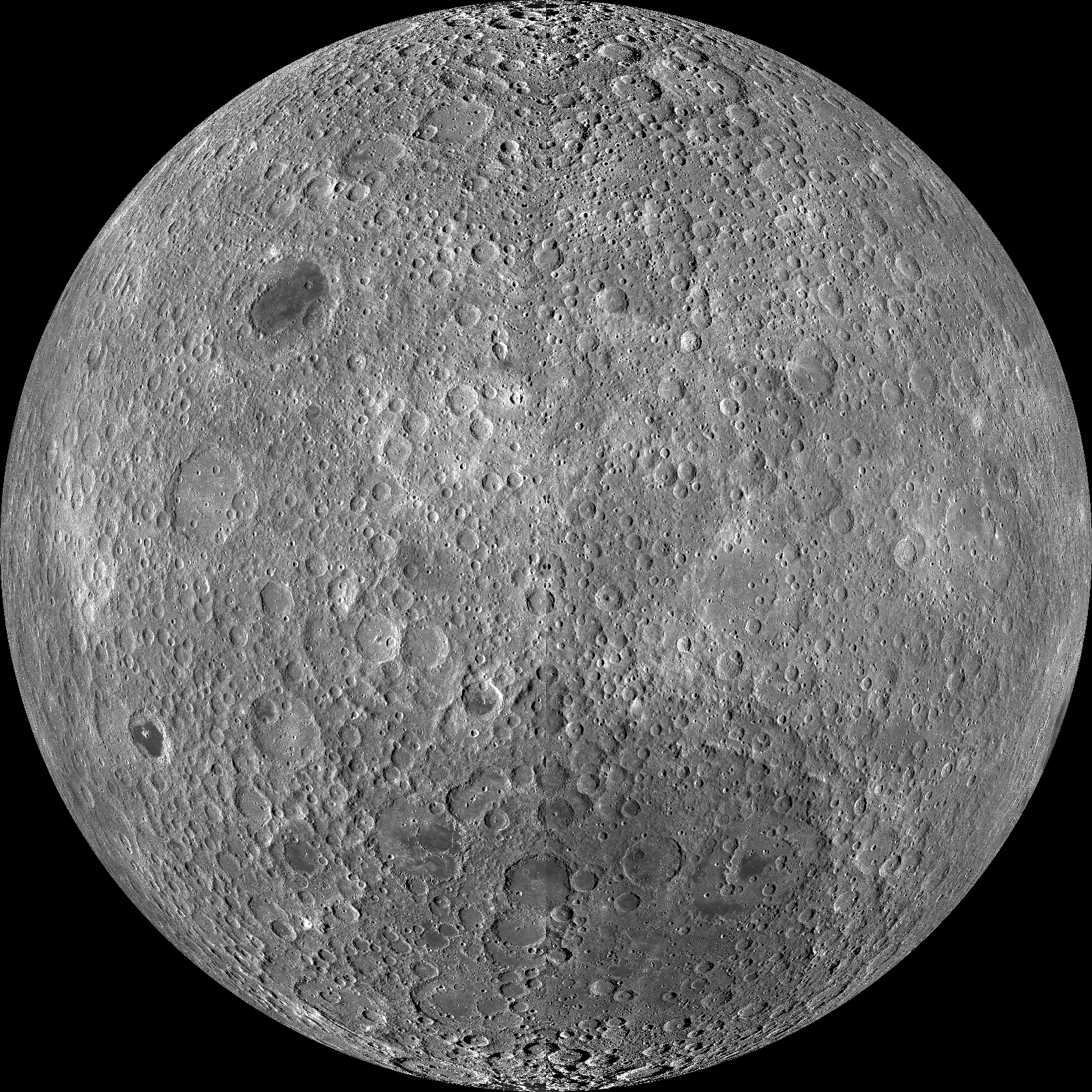'The Dark Side': Q&A with 'Lunar Gothic' Mystery Author Anthony O'Neill
A new "lunar gothic" mystery takes a look at the seedy side of moon colonization, complete with a hard-hitting detective, a sinister aerospace billionaire and hard science, with a side of Frankenstein's monster.

"The Dark Side" (Simon & Schuster, 2016), which the author called "a cross between '2001' [A Space Odyssey] and 'L.A. Confidential,'" follows a detective newly dispatched to the moon's far side, and a colony called Purgatory, home of convicted criminals, shady individuals of all stripes, and a big, bubbled city called Sin. Meanwhile, a murderous android picks off colonists, convicts and researchers as it makes its way to the city.
Space.com caught up with "The Dark Side" author Anthony O'Neill to hear more about the moon as a setting, his inspirations for the story (and particular characters) and his thoughts on lunar colonization. [How Moon Bases and Lunar Colonies Work (Infographic)]

Space.com: What inspired you to set a crime novel on the moon?
Anthony O'Neill: It's always seemed like a location that's very fascinating, very exploitable, and yet there haven't been that many [works of fiction] set on the moon. And it just occurred to me that "The Dark Side" was an excellent title for a crime book. Obviously, there were other options; I could have called it "The Far Side," because that's more accurate. But "The Dark Side" was just such an obvious title for a crime book or a horror book, and then it turned out I did something that's part crime and part horror — and, obviously, part science fiction.
Space.com: How did you incorporate research and the science of the moon into your narrative?
O'Neill: I was determined to do as scientifically accurate as I could manage, so I brought the same discipline that I brought to my historical novels, [consulting] dozens and dozens of books. I immersed myself in the geography and the logistics of living on the moon.
Get the Space.com Newsletter
Breaking space news, the latest updates on rocket launches, skywatching events and more!
I read about a proposed lunar base, which was a covered-over crater. I thought that was a fantastic idea for a moon base — an entire moon city, in my book, is a sealed-over crater. And the dust clouds — I found them rather fascinating. That's something most people don't know about. It's a phenomenon where the day-night terminator crosses the moon, [and] there's such a dichotomy in temperature range that dust is propelled into the air. That's one of those things that I might have exaggerated slightly for effect, because I don't know whether it happens all the time, but it certainly has been noted by various astronauts.
One of the things I did when I wrote the book is I bought a big lunar globe … And the amount of time that I spent trying to work out how long it would take to get from A to B, and how fast the day/night terminator would move across the moon — it's quite incredible. That sort of thing takes so long to work out: just driving from crater to the north pole and back, and when the Earth would appear over the horizon and when the sun would appear on the horizon — just incredible.

Space.com: You've called your novel "lunar gothic," right?
O'Neill: Lunar gothic — a genre I might have invented, along with — I don't know about lunar noir, but certainly lunar gothic. It's just the lighting in general; the contrast between the glare on the lunar surface and the dark of the night. And then, when there is no sunlight, it's just total and absolute blackness, which I called "nocturnity" in the book. It's a made-up word — just mind-blowing darkness and exposure to the cosmos in awesome detail. [The moon is] a very dramatic landscape, and I was determined to make use of it.
I actually wrote a first version of the novel in 2010 that was set entirely in the lunar city, Sin, and it was a little bit claustrophobic. So when I rewrote it, I was determined to open out the action. And I came up with this idea of an android making this odyssey 2,000 kilometers [1,200 miles] across the lunar surface. Obviously, the lunar gravity and the lunar vacuum sort of make it very difficult to contrive fast-moving action. But this is where, again, having an android who doesn't have to put on a spacesuit and can just walk along the surface — I thought it would make a very striking image, and it would free up the action. It's a sort of Frankenstein's monster narrative.
There are actually two narratives: One is the murder mystery and political chicanery going on in the lunar city, and the other one is this very murderous odyssey. In switching backwards and forwards between the two — and they eventually converge, of course — I thought that opened up the action, so there's a nice balance between the exterior and the interior action. [Gallery: Our Changing Moon]
Space.com: Speaking of politics, was the billionaire character Fletcher Brass, who rules over Purgatory, inspired by anyone in particular?
O'Neill: The Fletcher Brass character, the villainous aerospace billionaire, is based on a number of people — and I'm not going to name them in case they sue me. But there are a couple whom I actually admire — and for this, I'm just thinking of the aerospace billionaires. I think they do a terrific job with their billions. If governments aren't prepared to do that sort of thing, colonizing the moon or at least lunar research, it's left to people like them.
But for the purposes of my story, Fletcher Brass being an aerospace billionaire had to be a villain. I basically based him on some people I admire and some people I don't admire.
Space.com: Do you think we'll actually colonize the moon?
O'Neill: Well, I hope so. Obviously, I don't know whether funding at NASA is what it should be, and it's really painful that we spend so much money on nuclear weapons and fighting and so forth when we really should be spending money on space programs. I suppose there's a cost-benefit analysis. Certainly, the books that I read on the moon suggested that there was a lot of commercial potential in the moon. I don't know whether that was exaggerated, but it certainly sounded convincing to me. I'd certainly like to see a lot more attention paid to the moon. As suggested in the book, it would be very difficult to live there for any length of time, [but] maybe people can do it on a one-year basis.
I think that they're [space agencies and private space companies] concentrating on Mars over the moon for whatever reason. As anybody who reads the book would know, it's actually cheaper to launch space missions from the moon than it is from the Earth, so that in itself is probably a reason for setting up a base on the moon.
Since I wrote the book, the Chinese announced that they're going to land a probe on the far side of the moon in 2018. All power to them, but I just wish it was NASA that was doing it. If I'd have known that, I might have thrown in a Chinese character or two who [the android] runs into on the far side of the moon.
This interview has been edited for length.
Email Sarah Lewin at slewin@space.com or follow her @SarahExplains. Follow us @Spacedotcom, Facebook and Google+. Original article on Space.com.
Join our Space Forums to keep talking space on the latest missions, night sky and more! And if you have a news tip, correction or comment, let us know at: community@space.com.

Sarah Lewin started writing for Space.com in June of 2015 as a Staff Writer and became Associate Editor in 2019 . Her work has been featured by Scientific American, IEEE Spectrum, Quanta Magazine, Wired, The Scientist, Science Friday and WGBH's Inside NOVA. Sarah has an MA from NYU's Science, Health and Environmental Reporting Program and an AB in mathematics from Brown University. When not writing, reading or thinking about space, Sarah enjoys musical theatre and mathematical papercraft. She is currently Assistant News Editor at Scientific American. You can follow her on Twitter @SarahExplains.









